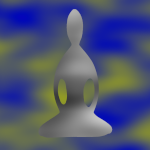Dear Friends,
The Chair
A funny thing about a Chair:
“The Chair” by Theodore Roethke, from The Collected Poems of Theodore Roethke
You hardly ever think it’s there.
To know a Chair is really it,
You sometimes have to go and sit.
As shared here: http://www.ayearofbeinghere.com/2013/06/theodore-roethke-chair.html
Most meditation instruction starts with mindfulness of the body. In formal meditation, posture is one way we can express mindfulness of body. We can explore mindfulness of body in a variety of postures: sitting, standing, walking, and lying down. Today, I’ll review some of the considerations for sitting posture.
When sitting, we want to establish ourselves in a way that we can stay alert and relaxed. We can sit on the floor or on a chair — if you are new to meditation and not used to sitting on the floor, I would recommend starting out with sitting on a chair.
Ines Freedman has an article with pictures of different options listed here:
https://www.insightmeditationcenter.org/postures-for-meditation/
The Wildmind website also has a series of posts with images too:
https://www.wildmind.org/posture
Here are a few key points:
- The seat/hips should be higher than the knees
- If you’re sitting on the floor, you can sit on a cushion, some blocks, a zafu, or a meditation bench to achieve this.
- In a chair, you may want to use a pillow or wedge.
- In a chair, we tend to sit away from the back of the chair so that we don’t slouch back. We can use a pillow or block for lower back support.
- We should aim for three points of contact in the posture:
- Seat on the chair or cushion or bench.
- In a chair, feet flat on the floor. If you feet don’t reach the floor, you can use blocks or blankets to bring the floor up to your feet.
- On the floor, the knees may be able to touch the floor, or one can use padding, blocks, pillows to provide the extra support.
- You can sit one leg in front of the other (often called “Burmese Style”), or a Half or Full Lotus — but only if your flexibility allows you to do this safely, without harming your knees, or in a kneeling position (usually using a bench or zafu for support).
- Position your hands so they are comfortable – on your thighs or lap, or one hand holding the other. It may be useful to use a small cushion or block to raise the hands so they can rest without causing strain on your shoulders or neck.
- Mouth is gently closed, and we generally breathe through the nose (of course, if you have nasal congestion, this might not make sense.)
- The eyes are usually closed, if that’s comfortable for you. It’s okay if you prefer to have the eyes open (or if you’re really sleepy), in which case, they should be kept lowered, with a soft gaze resting on the ground a little bit ahead of you.
Once in position, we can sense for these posture principles:
- Ground – feeling contact with the cushion/chair, and the ground – a sense of weight and stability in the lower half of the body
- Uprightness – the spine is upright to help us with a sense of alertness and brightness
- Some people use the imagery of a thread from the top of your head to the ceiling.
- There can be a slight tuck in the chin to encourage a lengthening of the neck.
- Openness – we can roll our shoulders up and back to open the chest, allowing a sense of receptivity
- Ease and Gentleness – invite typical areas of tension to soften – the eyes, the jaw, face muscles, belly, shoulders
- Stillness – we invite an orientation towards stillness without being rigid or stiff
- If we need to move, that’s not a problem, but we do so with slow, mindful, intentional movement.
For me, there’s one word that I bring to mind that encompasses all these points: dignity. I remember that taking time to practice meditation is a noble activity, and so I embody this attitude in my posture.
Another image that might work is the idea of sitting like a mountain — deeply grounded and reaching for the heavens.
Is there a word or image describes the posture for you?
To practice, Tina Rasmussen has a 10-minute overview of setting up a sitting posture – try it out and see what works for you:
https://www.dharmaseed.org/teacher/262/talk/55008/
Do you have any sitting posture principles that help you? Or do you have questions about posture? Post a comment here or send me an email.
With best wishes,
Andrea

in terms of posture, I call to mind statues of the Buddha sitting. Such serenity, such peace! And such a lovely straight body. Of course I’m not up to the lotus as he was, but no matter. I try to emulate that pose.
Carol Kavanagh
Thanks Carol! I like that image too. For me, I especially the idea of the gentle smile most representations have. Sometimes, I just need to remind myself to have a little smile, and that helps me have a sense of ease and relaxation in my practice too.